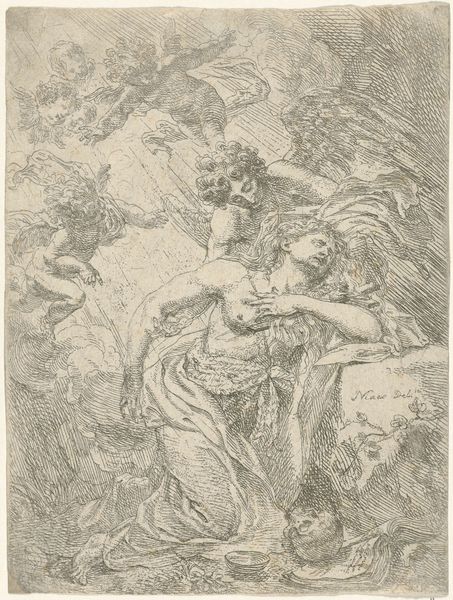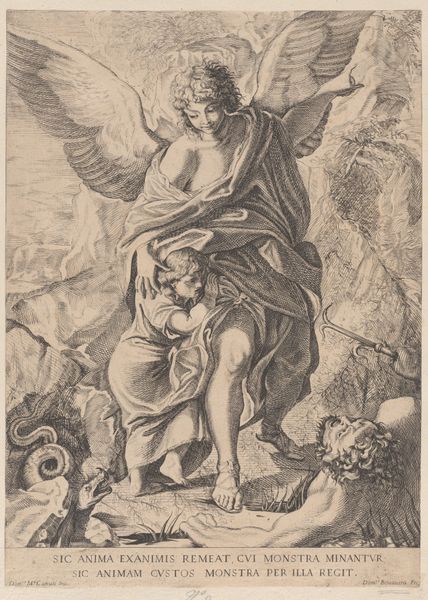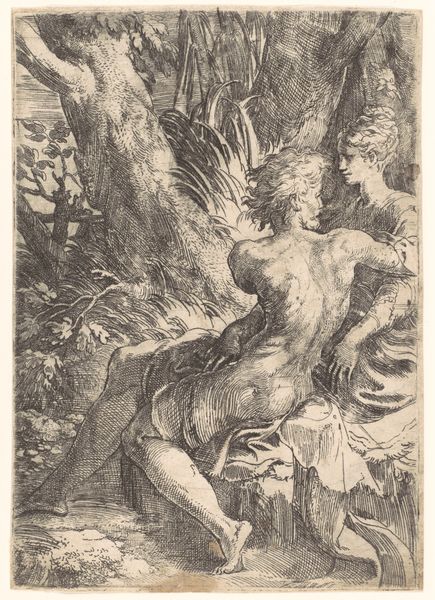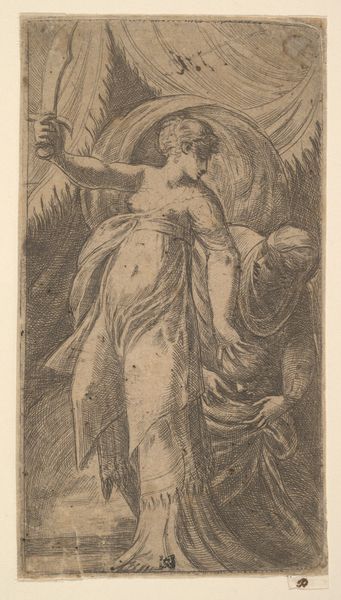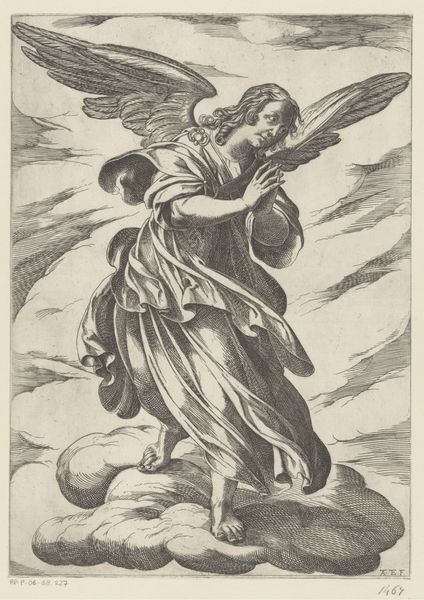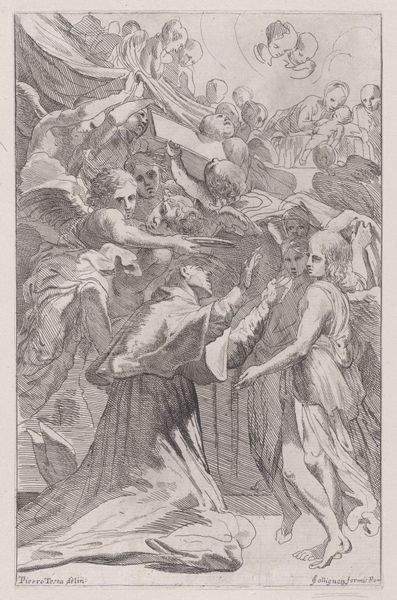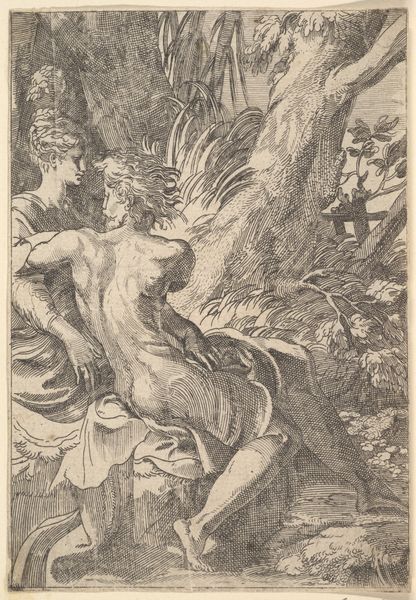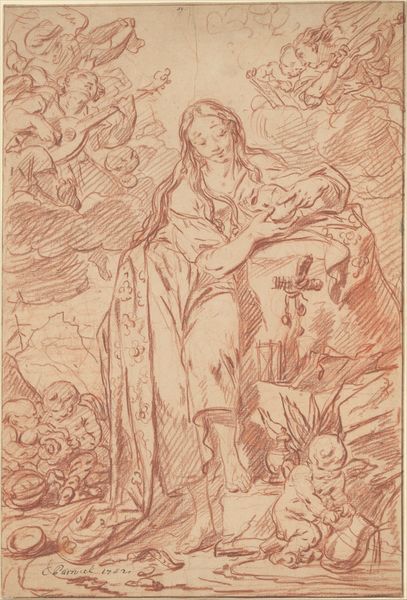
Judith with the head of Holofernes, which she places into a sack held by the figure behind her, she bears a sword in her outstretched right arm 1520 - 1540
0:00
0:00
drawing, print, etching, intaglio, engraving
#
drawing
#
ink drawing
#
narrative-art
#
pen drawing
# print
#
etching
#
intaglio
#
mannerism
#
figuration
#
history-painting
#
engraving
Dimensions: sheet: 6 3/16 x 3 9/16 in. (15.7 x 9 cm)
Copyright: Public Domain
Curator: This delicate yet powerful etching from the early 16th century depicts Judith holding the head of Holofernes. It's attributed to Parmigianino. Editor: There’s something ethereal, almost ghostly, about the figures in this print. The hatching gives it an otherworldly feel. Like a memory fading. Curator: Exactly. It captures the immediate aftermath, doesn't it? We see the strength in Judith’s pose, her sword held high. But look closely – there’s a fragility to the line work, a softness to her features. A beautiful dichotomy. Editor: Right, and thinking about the physical act of making this kind of piece. The labor involved with intaglio, scratching into a copper plate to create these tonal values. It contrasts wildly with this idea of divine retribution. The materials tell one story, the subject another. Curator: Good point. Also note that Parmigianino made the decision to depict the subject of Judith with an assistant as the pair carry the head of Holofernes, as opposed to a more heroic single portrait with the head of the man who threatened to invade their homeland. The material realities also point to Mannerism and to the time that the etching was made. It highlights not just the subject but the artist as well, with all the minute detailing that the audience may take in when observing. Editor: How was art consumed then? Was it circulated more as a means of understanding stories or seen as decoration? Or, I suppose it could also be both. I think that, when considering art, understanding the means by which someone engaged in labor to reproduce a scene gives more meaning and connects me in a material way that also acknowledges the history, like what’s being looked at. Curator: Well, its reproduction and distribution allowed a wider audience access to both the artistry of Parmigianino, and the visual storytelling it provides, offering ways to spread new approaches. Editor: Seeing those very human implications embedded in these older forms is fascinating. Thank you for guiding my perspective. Curator: Thank you! It's like unearthing whispers across time, isn’t it? Every line holding a secret, waiting to be felt.
Comments
No comments
Be the first to comment and join the conversation on the ultimate creative platform.
